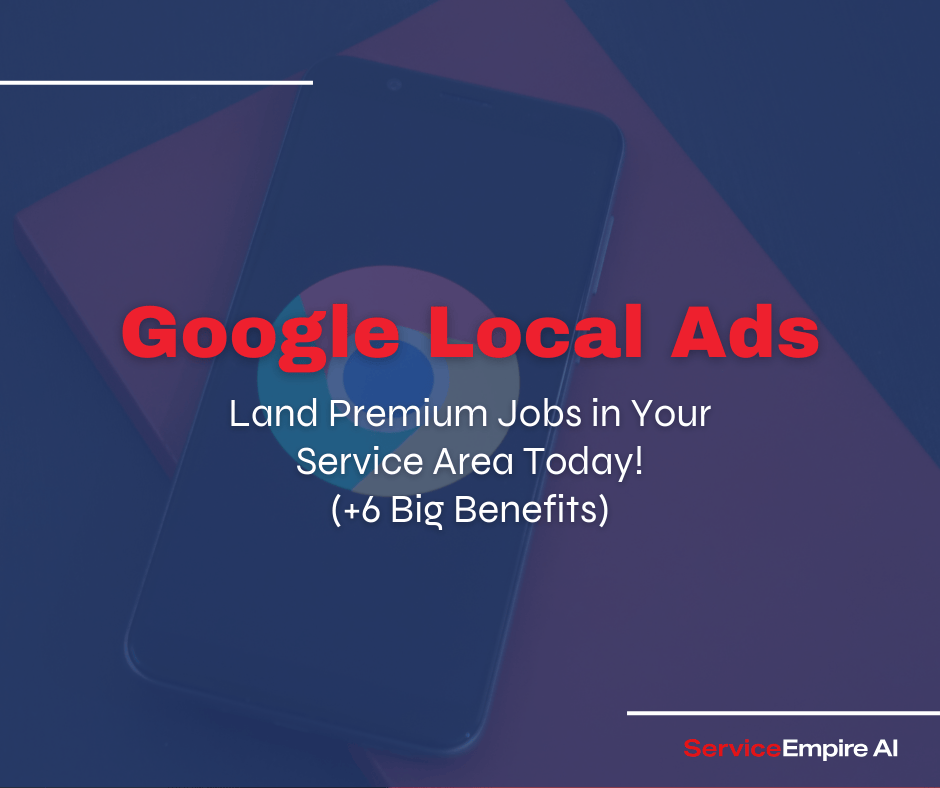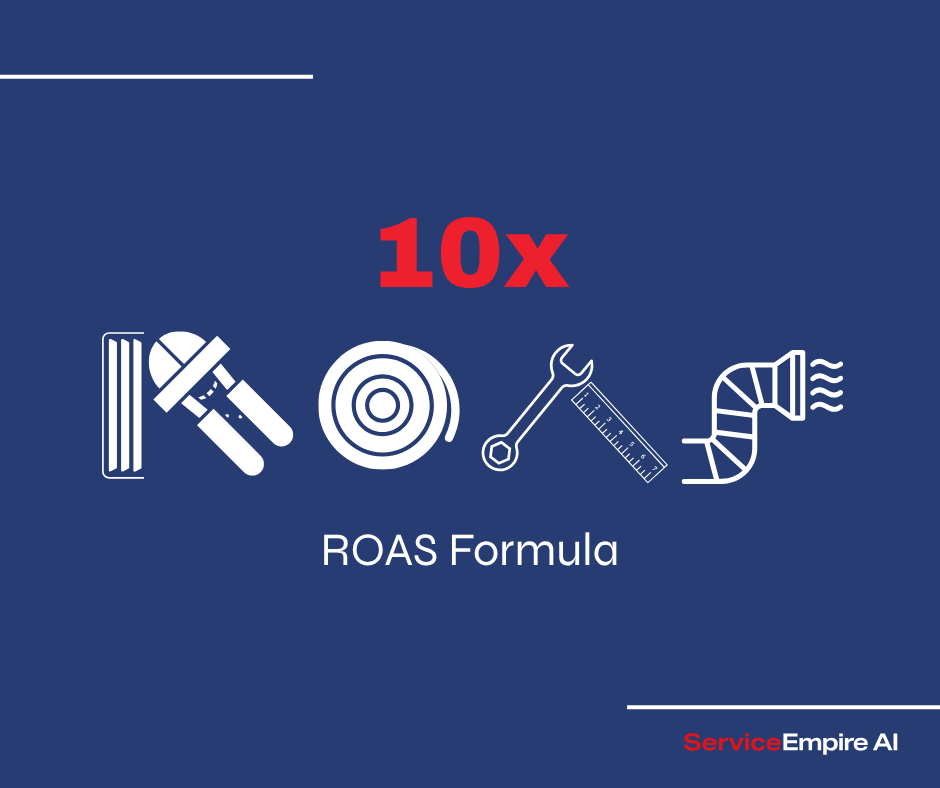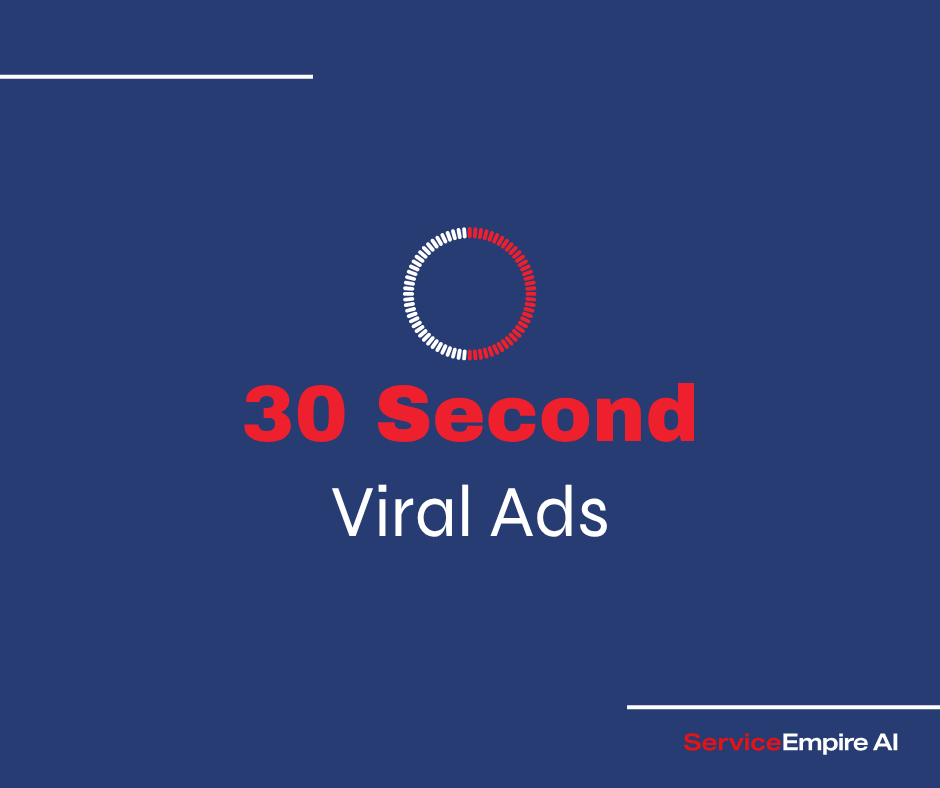
Google Local Ads have emerged as one of the most effective marketing channels for service businesses, with conversion rates averaging 25-30% – nearly triple the performance of traditional Google search ads. These specialized advertisements occupy prime real estate at the very top of Google search results, appearing before both traditional paid ads and organic listings. As part of Google's local services ecosystem, Google Local Ads (also known as Local Service Ads or LSAs) provide service-based businesses with a powerful way to connect with customers actively searching for their specific services in their geographic area.
Unlike traditional pay-per-click advertising, Google Local Ads operate on a pay-per-lead model, helping businesses avoid wasted ad spend while building trust through Google's verification process. The coveted Google Guaranteed badge that accompanies these ads instantly signals credibility to potential customers who are making quick decisions about which service provider to contact.
This comprehensive guide will walk you through everything you need to know about Google Local Ads in 2025, from basic setup to advanced optimization strategies. Whether you're a plumber, electrician, lawyer, or any other eligible service provider, you'll discover how to leverage this high-converting platform to grow your business.
What Are Google Local Ads?
Google Local Ads (officially called "Local Services Ads" by Google) are a specialized advertising format designed exclusively for service-based businesses that operate in specific geographic areas. These ads appear prominently at the top of Google search results when users search for local services like "plumber near me" or "emergency electrician."
Distinction Between Local Ads and Traditional Google Ads
Google Local Ads differ from traditional Google Ads in several fundamental ways:
Visual Examples in Search Results
When users search for local services, Google Local Ads appear as a scrollable carousel at the very top of the search results page. Each ad displays:
- Business name
- Star rating (out of 5) and review count
- Years in business (when available)
- Service hours
- Google Guaranteed or Google Screened badge
- "Call" button for immediate contact
- Service area information
Eligible Industries and Business Types
Google continues to expand eligibility for Local Service Ads, but as of 2025, the following service categories are eligible in most markets:
- HVAC
- Plumbing
- Electricians
- House cleaning
- Carpet cleaning
- Landscaping
- Locksmiths
- Appliance repair
- Pest control
- Roofing
- Window cleaning/repair
- Flooring/Floor repair
- Law firms (various practice areas)
- Financial planners
- Real estate agents
- Tax preparation
- Architects
- Tutoring services
- Photography service
- House cleaning
- Pet care
- Moving services
- Estate planning
- Personal training
- Child care services
Eligibility varies by location, with more service categories available in larger metropolitan areas.
Key Features: Google Guaranteed and Google Screened
The most distinctive feature of Google Local Ads is the trust verification program that comes with them:
Google Guaranteed Badge (for home service providers):
- Appears as a green checkmark with "Google Guaranteed" text
- Indicates the business has passed Google's verification process
- Provides customers with a limited financial guarantee (up to $2,000 lifetime) if they're unhappy with the quality of work
Google Screened Badge (for professional services):
- Appears as a black checkmark with "Google Screened" text
- Indicates the business has passed background and license checks
- Does not include the financial guarantee that comes with Google Guaranteed
Both programs require businesses to pass background checks, insurance verification, and license checks where applicable.
How Google Local Ads Work
Understanding the mechanics behind Google Local Ads is essential for maximizing their effectiveness for your business.
Pay-Per-Lead vs. Pay-Per-Click Model
Unlike traditional Google Ads where you pay each time someone clicks on your ad (regardless of whether they become a customer), Google Local Ads use a pay-per-lead model:
- You only pay when a customer contacts you directly through your ad
- Leads can come through phone calls, text messages, or direct booking requests
- Pricing varies by industry and location (more competitive areas have higher costs)
- You can dispute invalid leads for credit (wrong service area, spam calls, etc.)
This model significantly reduces wasted ad spend since you're only paying for actual customer inquiries rather than casual browsers.
Lead Qualification Process
Google defines a qualified lead differently depending on how the customer contacts you:
For phone calls:
- Call must be answered or returned
- Minimum call duration (typically 30 seconds)
- Call must be related to your services
For messages/booking requests:
- Customer must provide contact information and service details
- Business must respond within 24 hours
Not every customer contact will become a job, but Google only charges for leads that meet these basic qualification criteria.
Google Screening and Verification Requirements
Before you can run Local Service Ads, your business must complete Google's verification process:
1. Background checks for business owners and sometimes employees
2. License verification for industries requiring professional licensing
3. Insurance verification (minimum coverage varies by industry)
4. Reviews and ratings (minimum requirements vary)
The verification process typically takes 2-4 weeks to complete but can be longer in some cases. Once verified, your business will need to maintain these requirements to keep your ads running.
Service Area Targeting Functionality
Google Local Ads are highly targeted by geographic location:
- You define specific service areas by zip codes or radius
- Ads only appear to users in your designated service areas
- You can adjust service areas based on business capacity and demand
- More precise targeting than traditional Google Ads geographic targeting
Ranking Factors for Ad Placement
Several factors determine how prominently your Local Service Ads appear:
Primary ranking factors:
- Proximity to the searcher's location
- Google review rating and volume
- Responsiveness to leads (speed and consistency)
- Business hours matching the search time
- Complaint history with Google
- Ad budget (though less impactful than other factors)
Unlike traditional Google Ads, you cannot simply pay more to appear higher than competitors. Performance metrics and proximity play much larger roles in ad placement.
Benefits of Google Local Ads for Service Businesses
Service businesses that implement Google Local Ads enjoy numerous advantages over competitors using only traditional marketing channels.
#1: Premium Placement
The most obvious benefit is positioning—Google Local Ads appear at the very top of search results:
Above traditional Google Ads
Above organic search results
Above Google Maps listings
Prominent on both mobile and desktop devices
This premium placement captures user attention immediately, often before they even scroll down to see other results.
#2: Trust Signals: Google Guaranteed/Google Screened Badges
The verification badges serve as powerful trust signals to potential customers:
- 68% of consumers report being more likely to choose a business with the Google Guaranteed badge
- The financial guarantee (up to $2,000) reduces perceived risk for customers
- The verification process filters out less reputable competitors
- Trust badges are particularly valuable for emergency services when customers need to make quick decisions
#3: Qualified Lead Generation Advantages
The lead quality from Local Service Ads tends to be significantly higher than other channels:
- Users are actively searching for your specific service
- Geographic targeting ensures leads are within your service area
- Users contacting you through these ads are typically ready to hire, not just researching
#4: Mobile-First Design
Google Local Ads are optimized for mobile users, which is crucial considering that:
- 76% of local searches result in a phone call
- 88% of searches for local businesses on a mobile device call or visit the business within 24 hours
- The prominent "Call" button facilitates immediate contact
- Mobile optimization is particularly valuable for emergency services
#5: Lower Cost Per Acquisition
Despite potentially higher cost-per-lead than traditional advertising, the overall acquisition cost tends to be lower:
- Higher quality leads reduce wasted sales efforts
- Pay-per-lead model eliminates payment for non-interested clicks
- Improved conversion rates lower the effective cost per new customer
- Disputed leads can be credited back to your account
#6: Direct Booking/Calling Capabilities
The streamlined customer contact process removes friction from the booking process:
- One-tap calling directly from search results
- Simplified messaging interface
- Integrated booking options (for eligible businesses)
- No need for users to navigate a website before contacting you
Setting Up Google Local Ads: Step-by-Step
Getting started with Google Local Ads requires following a detailed verification process. Here's a comprehensive step-by-step guide to launching your first campaign.
Account Creation Process
1. Visit the Google Local Services Ads platform
- Go to ads.google.com/local-services-ads
- Sign in with your Google account or create a new one
2. Business information entry
- Enter your business name, address, and contact information
- Specify whether you're the business owner or an agency representative
3. Service selection
- Choose your primary service category
- Select specific services you offer within that category
- Add any specializations or sub-services
4. Service area definition
- Enter zip codes or cities where you provide services
- Adjust the radius for each area if needed
- Consider business capacity when defining your service area
Google Screening and Verification Requirements (copied from above)
Before you can run Local Service Ads, your business must complete Google's verification process:
1. Background checks for business owners and sometimes employees
2. License verification for industries requiring professional licensing
3. Insurance verification (minimum coverage varies by industry)
4. Reviews and ratings (minimum requirements vary)
The verification process typically takes 2-4 weeks to complete but can be longer in some cases. Once verified, your business will need to maintain these requirements to keep your ads running.
Profile Completion Best Practices
Optimize your profile for maximum effectiveness:
- Business description: Clear, concise overview of your services (100-200 words)
- Business hours: Accurate operating hours, including emergency availability
- Photos: High-quality images of your business, staff, vehicles, and completed work
- Job types: Specific services you want to receive leads for
- Hiring highlights: What makes your business unique (years in business, guarantees, etc.)
Service Area Selection Strategies
Strategic service area selection can maximize your ad performance:
- Start focused: Begin with your core service areas rather than maximum coverage
- Consider travel time: Balance coverage area with practical travel constraints
- Analyze competition: Prioritize areas with less competition when possible
- Phase expansion: Gradually expand service areas as you evaluate performance
- Seasonal adjustments: Modify coverage based on seasonal demand patterns
Budget Setting Guidance
You need to consider several factors when setting up your budget:
- Industry average lead costs: Research typical costs for your specific service
- Business capacity: Only budget for the number of leads you can effectively handle
- Conversion expectations: Factor in your typical lead-to-customer conversion rate
- Customer lifetime value: Consider long-term value, not just initial job revenue
- Seasonality: Allocate more budget during peak demand periods
Pro tip: Start with a conservative daily budget and increase it gradually as you measure performance. Most service businesses begin with $20-50 per day and scale up based on results.
Once you set your budget, then you need to know your return on ad spend (ROAS); here's how to calculate the ROAS formula.
Google Local Ads vs. Other Google Ad Products
Understanding how Google Local Ads compare to other Google advertising options helps you build a comprehensive marketing strategy.
Comparison with Google Ads (Search)
Differences from Google Maps Promotion
Google Maps promotions (through Google Business Profile) differ from Local Service Ads:
- Local Service Ads: Featured at the top of search results with trust badges
- Google Maps promotion: Enhanced visibility within Google Maps
- Cost structure: Maps promotion uses pay-per-click, not pay-per-lead
- Verification: Maps doesn't require the extensive verification of LSA
- Intent capture: Maps users may be browsing options rather than ready to contact
Google Business Profile Relationship
Google Business Profile (formerly Google My Business) works alongside Local Service Ads:
- GBP provides the foundation information for your LSA profile
- Consistent information across platforms improves overall visibility
- Reviews on GBP influence LSA performance
- GBP is free but offers less prominent placement than LSA
- Both systems work together in Google's local search ecosystem
When to Use Each Ad Type
You can strategize ways to use Google ad products across the board. In fact, this often yields the best results:
Use Google Local Ads when:
- You want direct leads from people ready to hire
- You offer services eligible for the program
- You want to leverage Google's trust badges
- You prefer a pay-per-lead model
Use Google Search Ads when:
- Your service isn't eligible for Local Service Ads
- You want to target specific keywords or search phrases
- You need more control over ad messaging
- You're promoting special offers or promotions
Use Google Maps promotion when:
- You want to increase visibility for physical location visits
- You're targeting customers who prefer browsing options
- You want to highlight specific aspects of your business
Complementary Strategy Recommendations
For maximum impact, consider this integrated approach:
1. Google Local Ads: Primary lead generation for direct service requests
2. Google Business Profile: Foundation for local presence and reviews
3. Google Search Ads: Targeted campaigns for specific services or promotions
4. Google Display Ads: Brand awareness and remarketing
5. YouTube Ads: Video demonstrations and brand building
Most successful service businesses allocate 50-70% of their Google ad budget to Local Service Ads while using other platforms for supporting roles.
Conclusion
Google Local Ads represent one of the most effective marketing channels available to service businesses in 2025. With their prominent placement, trust-building verification process, and pay-per-lead model, they offer an unmatched combination of visibility and value for companies looking to generate qualified leads.
The platform's continued expansion into new service categories and geographic areas makes it accessible to more businesses than ever before. While the verification process requires an investment of time and effort, the resulting Google Guaranteed or Google Screened badge provides a competitive advantage that's difficult to match through other marketing channels.
To maximize your success with Google Local Ads:
1. Complete the verification process thoroughly
2. Optimize your profile with comprehensive information and quality photos
3. Respond to leads quickly and professionally
4. Maintain a strong review profile
5. Monitor performance and adjust your strategy accordingly
For service businesses looking to grow in 2025, Google Local Ads should be a cornerstone of your digital marketing strategy, working alongside your other channels to drive qualified leads and build your brand reputation.
Frequently Asked Questions
How much do Google Local Ads cost?
Google Local Ads operate on a pay-per-lead model, with costs varying by industry and location. As of 2025, average lead costs range from $15-40 for lower-cost services like house cleaning to $50-150 for professional services like legal consultation. High-value services in competitive markets command the highest prices, while more basic services in less competitive areas cost less. You set a weekly budget, and Google charges you only when potential customers contact you directly through your ad.
How long does verification take for Google Local Ads?
The verification process typically takes 2-4 weeks but can extend to 6-8 weeks for highly regulated industries or businesses in certain jurisdictions. Background checks usually take 10-14 business days, while license and insurance verification can take an additional 5-10 business days. To speed up the process, have all your documentation ready before starting, including business license, insurance certificates, and identification documents. Responding promptly to any additional information requests from Google also helps minimize delays.
Can I pause my Google Local Ads campaign?
Yes, you can pause your Google Local Ads campaign at any time through the Google Local Services dashboard. When paused, your ads will stop appearing in search results, and you won't receive new leads or incur charges. You can pause your campaign for specific dates (useful for vacations or seasonal downtime) or indefinitely. Campaigns can be reactivated at any time, though it may take 24-48 hours for ads to begin appearing again. Note that pausing frequently or for extended periods might affect your ad placement when you resume.
What happens if I dispute a lead?
When you dispute a lead, Google reviews the case to determine if you should receive a credit. If approved, the lead cost is credited back to your account and applied to future leads. The dispute process typically takes 7-14 days for resolution. Common valid dispute reasons include: wrong service area, wrong service category, spam/solicitation calls, or duplicate leads from the same customer. Google doesn't guarantee approval of all disputes, but providing clear documentation improves your chances. Your dispute approval rate doesn't affect your ad ranking as long as it stays below 30% of total leads.
How are Google Local Ads different from Google Ads?
Google Local Ads differ from traditional Google Ads in several key ways: they operate on a pay-per-lead model rather than pay-per-click; they appear at the very top of search results in a distinct format; they require extensive business verification; they include trust badges (Google Guaranteed or Google Screened); they have simpler targeting based only on service category and location rather than keywords; and they have less customizable ad content since Google generates the ad from your business profile. Local Service Ads typically have higher conversion rates but less targeting flexibility compared to traditional Google Ads
Do I need a Google Business Profile for Local Service Ads?
While not strictly required, having a complete Google Business Profile (formerly Google My Business) is highly recommended for Local Service Ads. Your Business Profile information helps populate your Local Service Ads profile, and the reviews from your Business Profile contribute to your ad ranking and appearance. Additionally, a well-maintained Business Profile creates consistency across Google's ecosystem, improving overall visibility and trust. For optimal results, ensure your business information, hours, and service offerings are identical across both platforms.
How does the Google Guaranteed badge work?
The Google Guaranteed badge appears on Local Service Ads for home service providers who have passed Google's verification process. It signals to customers that Google has verified the business's license and insurance information and conducted background checks. Additionally, it includes a limited protection for customers—if they're unsatisfied with the quality of work, Google may reimburse them up to $2,000 (lifetime limit per customer). This badge significantly increases consumer trust and click-through rates, with studies showing up to 50% higher engagement for ads featuring the badge compared to those without it.





